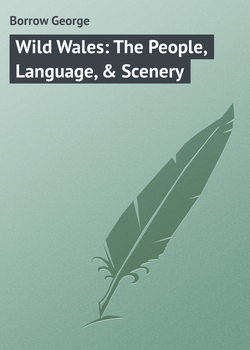Читать книгу Wild Wales: The People, Language, & Scenery - Borrow George - Страница 2
INTRODUCTION
I
WHY “WILD WALES” IS A SIMPLE ITINERARY
ОглавлениеI have been invited by the editor of this series to say a few words upon Borrow’s “Wild Wales.” The invitation has come to me, he says, partly because during the latter days of Borrow’s life I had the privilege as a very young man of enjoying his friendship, and partly because in my story, “Aylwin,” and in my poem, “The Coming of Love,” I have shown myself to be a true lover of Wales – a true lover, indeed, of most things Cymric.
Let me begin by saying that although the book is an entirely worthy compeer of “Lavengro” and “The Romany Rye,” and although like them it is written in the autobiographic form, it belongs, as I propose to show further on, to an entirely different form of narrative from those two famous books. And it differs in this respect even from “The Bible in Spain.” Unlike that splendid book, it is just a simple, uncoloured record of a walking tour through the Principality. As in any other itinerary, events in “Wild Wales” are depicted as they actually occurred, enriched by none of that glamour in which Borrow loved to disport himself. I remember once asking him why in this book he wrote an autobiographic narrative so fundamentally different from “Lavengro” and “The Romany Rye” – why he had made in this book none of those excursions into the realms of fancy which form so charming a part of his famous quasi-autobiographic narratives. It was entirely characteristic of him that he remained silent as he walked rather sulkily by my side. To find an answer to the queries, however, is not very difficult. Making a tour as he did on this occasion in the company of eye-witnesses – eye-witnesses of an extremely different temper from his own, eye-witnesses, moreover, whom he specially wished to satisfy and please – his wife and stepdaughter – he found it impossible to indulge in his bohemian proclivities and equally impossible to give his readers any of those romantic coincidences, those quaint arrangements of incidents to illustrate theories of life, which illuminate his other works. The tour was made in the summer and autumn of 1854; during the two or three years following, he seems to have been working upon this record of it. The book was announced for publication in 1857, but it was not until 1862 that his publisher, who had been so greatly disappointed by the reception given to “Lavengro” and “The Romany Rye,” took courage to offer it to the public.
